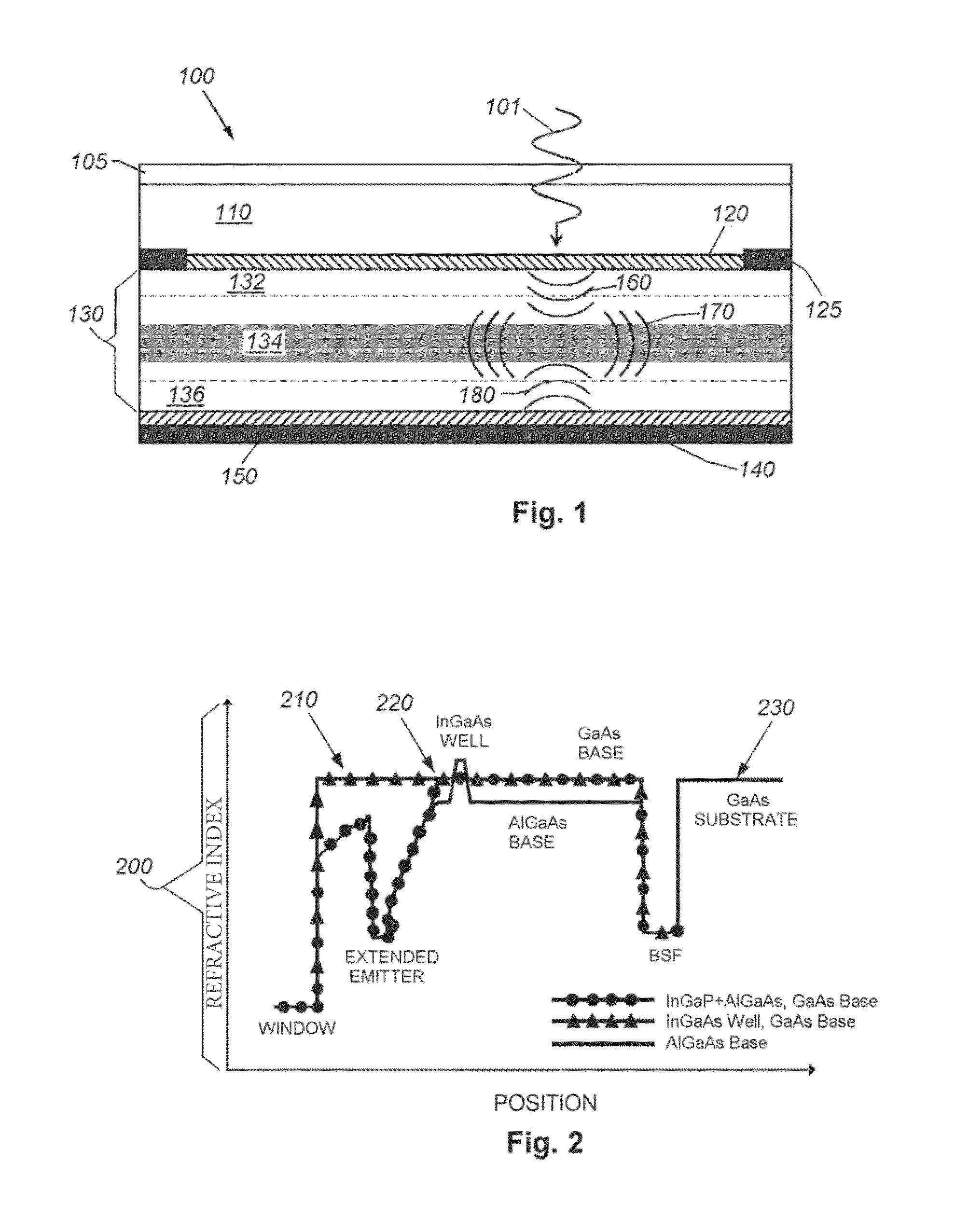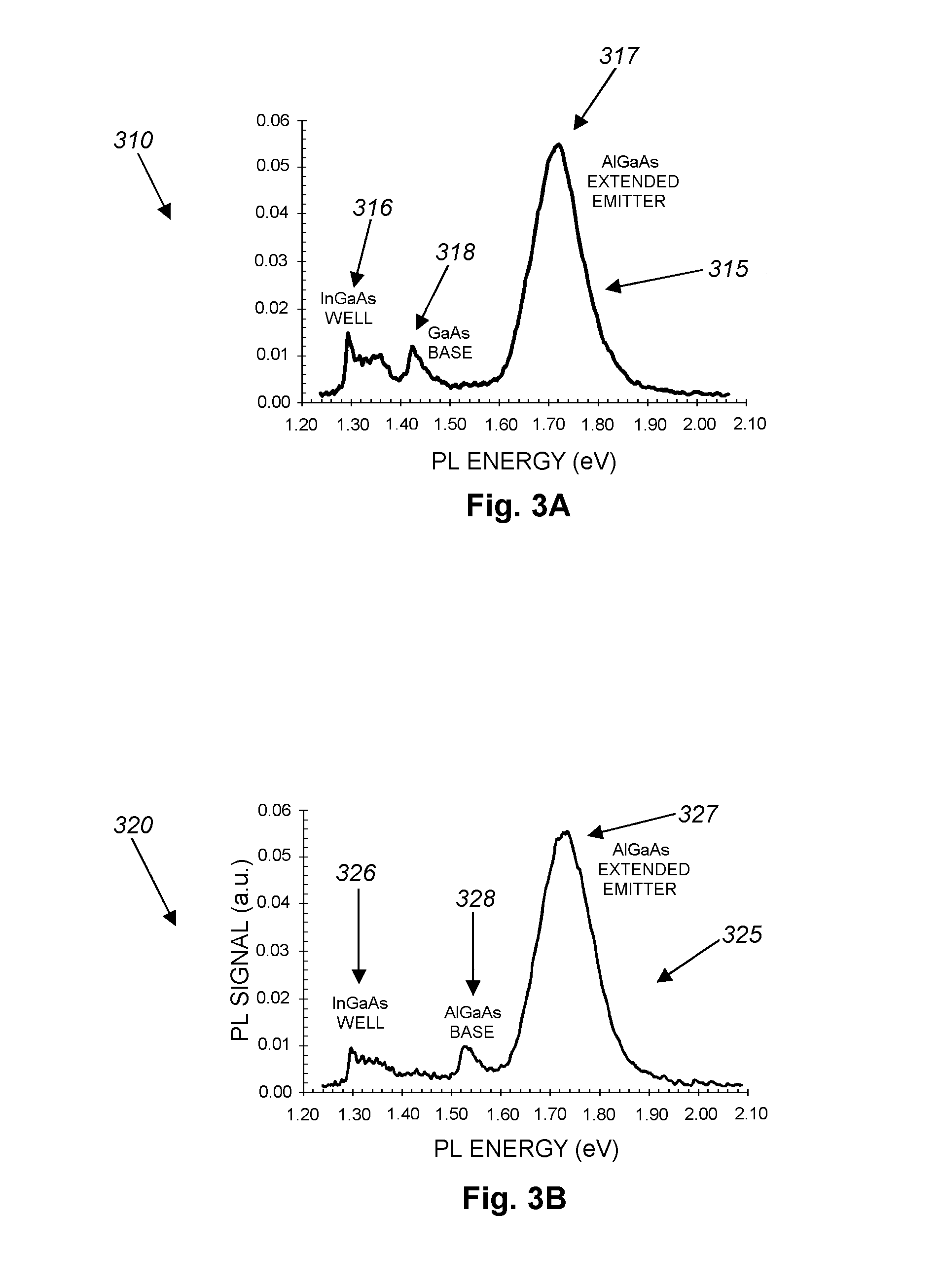High efficiency quantum well waveguide solar cells and methods for constructing the same
a solar cell and quantum well technology, applied in the field of semiconductor-based photovoltaic energy converters, can solve the problems of limited device operation voltage, affecting the generation of current, and reducing the operation voltage of conventional quantum structured solar cells, so as to minimize the underlying diode dark current, increase the optical path length, and enhance the open circuit voltage of quantum well waveguide solar cell structures
- Summary
- Abstract
- Description
- Claims
- Application Information
AI Technical Summary
Benefits of technology
Problems solved by technology
Method used
Image
Examples
Embodiment Construction
[0020]A typical thin film solar cell structure contains a limited volume of low band gap material, and thus requires advanced light trapping structures to reach its potential performance levels. Light management is achieved by assuring that incident photons are not lost due to reflections but are instead directed into the semiconductor absorbing layers. The scattering of incident light to ensure each photon has a non-normal trajectory is a strategy for increasing the optical path length of photons within the absorption layer. In addition, the application of a back reflector to bounce any unabsorbed photons back up into the active layers of the device is a beneficial aspect of any effective photovoltaic light trapping scheme. However, the most effective light trapping schemes will also direct light horizontally into the plane of the absorbing layer. Waveguide structures in which thin layers of high refractive index material are surrounded by low refractive index material provide a ph...
PUM
 Login to View More
Login to View More Abstract
Description
Claims
Application Information
 Login to View More
Login to View More - R&D
- Intellectual Property
- Life Sciences
- Materials
- Tech Scout
- Unparalleled Data Quality
- Higher Quality Content
- 60% Fewer Hallucinations
Browse by: Latest US Patents, China's latest patents, Technical Efficacy Thesaurus, Application Domain, Technology Topic, Popular Technical Reports.
© 2025 PatSnap. All rights reserved.Legal|Privacy policy|Modern Slavery Act Transparency Statement|Sitemap|About US| Contact US: help@patsnap.com



